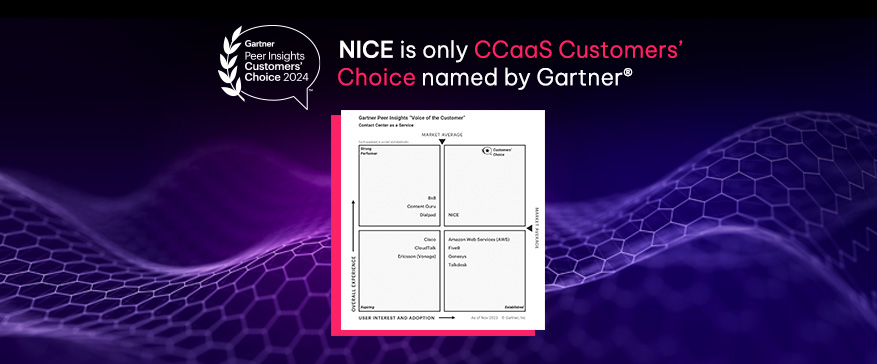What is Average Handle Time (AHT)?
Average handle time (AHT) is a standard call center metric, used to measure the average length of time it takes to complete a transaction.
It factors in:
- Talk time (the amount of time agents are speaking to customers)
- Hold time (the amount of time agents put the callers on hold)
- Conference time (the amount of time agents are in a conference)
- Wrap time (the amount of post call time)
- Total calls handled.
The calculation sums up total talk time, hold time, conference time and wrap time and divides the result by the total customer calls handled. All these statistics are taken from a call center's automatic call distribution (ACD) system.
Average handle time is used in several ways by call center leaders and staff. Typically, lower average handle times indicate that the call center is being more efficient with its agents. The lower the average handle time, the more calls each agent can handle. Which leads to the next use – AHT as a significant input for calculating staffing needs. Workforce managers use it to calculate both the total number of agents needed, as well as to determine schedules. Average handle time can be calculated down to the agent level and is frequently an individual metric on agent dashboards.
But managing to AHT should be done prudently. Driving down average handle times could have a negative impact on the customer experience, as agents feel compelled to rush callers through the interaction. Additionally, an increasing AHT could indicate that calls are becoming more complex and time-consuming. Average handle time AHT is a piece of the puzzle, but it's not the whole picture. Contact centers need to have comprehensive reports and analytics in order to gain a full understanding.
As a crucial metric in the call center industry, AHT plays a vital role in determining the efficiency and effectiveness of a call center's operations and the impact on customer satisfaction.
Overview of the AHT calculation formula
AHT is calculated by dividing the total amount of time spent on calls by the number of calls handled during a particular period. The formula for calculating AHT is as follows:
AHT = (Total Talk Time + Hold Time + After-Call Work Time) / Total Number of Calls
Step-by-step guide to calculate AHT
- Determine the period for which you want to calculate AHT, such as a day, week, or month.
- Collect data on the total talk time, hold time, and after-call work time for all calls handled during that period.
- Add the talk time, hold time, and after-call work time for all calls to get the total time spent on calls.
- Count the total number of calls handled during the period.
- Divide the total time spent on calls by the total number of calls handled to get the AHT.
Common mistakes to avoid while calculating AHT
One common mistake in calculating AHT is not including all the time spent on a call, such as hold time and after-call work time. Another mistake is not counting all the calls handled, such as abandoned calls or calls that were not recorded. It is important to ensure that all call data is accurately captured and included in the calculation to get an accurate AHT.
Why is AHT important in the customer service industry?
AHT is important in the customer service industry because it directly impacts customer experience and satisfaction. A long AHT can lead to frustrated customers who may perceive the service as slow and inefficient. On the other hand, a short AHT can result in rushed interactions that do not fully resolve the customer's issue. AHT also plays a role in the overall call center performance and efficiency.
Explanation of how AHT affects customer experience
A long AHT can negatively impact customer experience by making customers wait for an extended period, leading to dissatisfaction. It can also result in customers being transferred multiple times, which can be frustrating and confusing. A short AHT, on the other hand, may result in rushed interactions that do not fully address the customer's concerns, leaving them feeling dissatisfied and frustrated.
Impact of AHT on customer satisfaction
AHT has a direct impact on customer satisfaction, as it affects the customer's perception of the service quality. Customers who experience long wait times and inefficient service are likely to be dissatisfied and may switch to a competitor. Conversely, a short AHT can improve customer satisfaction by providing prompt and efficient service.
Role of AHT in overall call center performance
AHT is an important metric in measuring overall call center performance. It provides insights into the efficiency and effectiveness of call handling processes and can help identify areas for improvement. A low AHT can indicate efficient call handling processes and a high level of agent productivity, while a high AHT can indicate a need for process improvements and additional agent training.
What is a good average handle time?
A good AHT varies depending on the industry, call type, and complexity of the issue being handled. In general, a good AHT should be as low as possible without compromising the quality of service provided. However, it is important to keep in mind that different industries and call types may have different benchmarks for what constitutes a good AHT.
Strategies to improve AHT
Efficient call handling is essential for maintaining a low average handle time (AHT) while providing high-quality service to customers. AHT is a crucial metric in measuring call center performance and efficiency. By improving AHT, call centers can increase agent productivity, reduce wait times, and improve customer satisfaction. Here are some strategies to help improve AHT.
- Efficient call routing and handling:
Utilizing an effective call routing system can reduce AHT by ensuring that calls are directed to the appropriate agent quickly. For example, a system that automatically routes calls based on the agent's skills and availability can reduce the time customers spend on hold and increase the likelihood of resolving their issue on the first call.
- Agent training and development:
Training and developing agents can improve their skills and knowledge, enabling them to handle calls more efficiently. Providing training on soft skills, such as active listening and effective communication, can help agents identify the customer's needs more quickly and provide more effective solutions.
- Streamlining call scripts and processes:
Streamlining call scripts and processes can reduce AHT by ensuring that agents have a clear and concise process to follow when handling calls. Simplifying call scripts and reducing the number of steps required to resolve an issue can reduce call handling time, enabling agents to handle more calls in less time.
- Utilizing technology to reduce AHT:
Utilizing technology, such as automated chatbots, can help reduce AHT by providing customers with instant assistance for common issues. Automated chatbots can quickly provide customers with the information they need, reducing the need for a live agent. Additionally, call center software can help agents manage calls more efficiently by providing them with real-time information on the customer's history and issues.
Improving AHT can have a positive impact on call center performance, agent productivity, and customer satisfaction. By implementing these strategies, call centers can streamline call handling processes, reduce call handling time, and provide high-quality service to customers.







